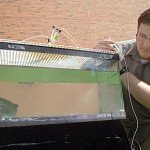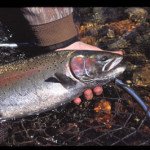Recreational boaters in most parts of the country have been introduced to gasoline containing higher concentrations of ethanol, a corn-based additive that replaced a known carcinogen, MTBE. The new fuel, dubbed “E-10” for its 10 percent ethanol content, unfortunately has the ability to attract greater amounts of water and “phase separate,” or form two separate solutions in the gas tank, usually over a long period of time. Once this happens, the engine won’t run and internal damage could occur.
Boaters must be careful how they store their boat over the winter to prevent fuel problems next year. Boat U.S. has these recommendations:
- Once phase separation occurs in E-10 gasoline, additives and water separators can’t help. The only remedy is to have the gas and ethanol/water professionally removed from the tank.
- With any fuel that sits in a tank for a long time, it’s important to add a stabilizer. But understand that stabilizers do not prevent phase separation.
- E-10 has been a fact of life in certain areas of the Midwest for over a decade and there have been relatively few problems. The best practical recommendation learned from marina operators in the region is to top off a boat’s fuel tanks to about 95 percent full, leaving room for expansion. A tank that is almost full limits the flow of air into and out of the vent, which reduces the chance of condensation adding water to the fuel. Draining fuel tanks of E-10 gas, while completely eliminating any chances of phase separation, is potentially dangerous and an impractical solution.
- Whether you believe your boat’s fuel tanks are half full or half empty, leaving a tank partially filled is a bad move. A Midwest marina owner confirmed that phase separation problems typically occurred when boats were stored over the winter with tanks only one quarter to one-half full. In the summer, infrequently used boats with partially filled tanks are also prone to phase separation.
- Never try to plug up a fuel tank vent to prevent moist air from entering a tank. Without room to expand, the additional pressure could rupture fuel system components.



